Diversity in Children's Books: Why it Matters
Posted by Yamini Vijayan on July 01, 2016This year, we published a book called 'How Do Aeroplanes Fly?' on StoryWeaver in 10 languages. The book – written by Aditi Sarawagi and illustrated by Lavanya Karthik - was recently introduced to a group of children in Kota, Rajasthan, by a colleague during one of her field visits. One of the interesting observations she had made was that the children – both boys and girls – were struck by the mention of female pilots. “We didn't know that women could fly planes,” one of them had said to her. You can watch a related video here.
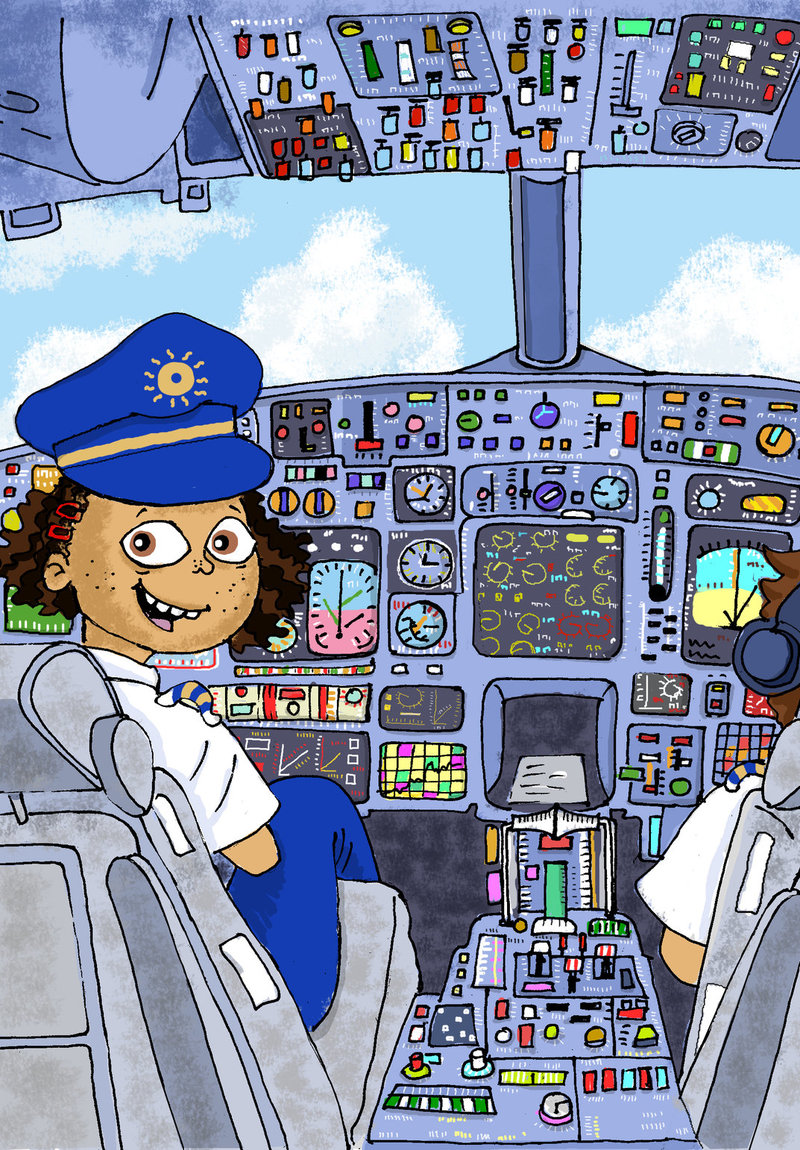
While I'm aware of disparities existing in every corner of India, this still took me by surprise. It also made me realize that all the thinking we do, as publishers, teachers and parents – which often feels like overthinking – is most definitely a good thing. Including a woman pilot and an Indian one at that had made a difference here, after all.
Over the last couple of years, there has been a lot of conversation around the growing need for diverse and inclusive books. And what does diversity mean, you ask. I suppose it could mean a range of things: from gender and religion, to language and ethnicity. The website We Need Diverse Books has listed down their vision as “A world in which all children can see themselves in the pages of a book." In India, initiatives like @genderlogindia and BAM! Books have actively helped keep this conversation alive.
In 2012, a national consultation involving experts from institutions, authors, editors, publishers, librarians and educators was organized by National Book Trust. 'The Good Books Guide', the document that emerged from this gathering, speaks about diversity and inclusion in its section on values. “There is a need to realize that many groups – and their world-view and perspectives – are often ignored in children's literature. For instance, girls, tribal or dalit children, children with special needs, working children and those living in urban slums, don't get enough representation in mainstream literature.”
When I think about the first set of books that were published on StoryWeaver (released digitally first), a few titles come to mind. To be completely honest though, it feels odd to be calling these books diverse. Why should a boy cooking be thought of as diverse? Why should a book featuring a single-parent household be slotted as diverse? Just because there are characters from the North-East of India, should a book be treated as diverse? Children living near a garbage dump... diverse?
Here's the thing though. There aren't enough children's books, especially in India, in which boys or men are shown to be cooking. Single-parent households in children's books? Hardly. Characters from the North-East? A handful. Well, you get the point. In a world in which children are surrounded with fear, prejudice and suspicion, these stories – which include multiple perspectives and help build empathy - become all the more important. Stories with diverse characters will help them realize that 'the other' – in any regard – is more like them than they had imagined. And that even if they weren't, these differences are to be celebrated.
If we want our children to be independent in their thinking, we certainly need to give them access to rich and eclectic narratives that not only only inspire curiosity, but also show rigid patterns being broken gracefully. In Ross Montgomery's recent article on 'Why Writing Diverse Children's Books is Tough', he addresses a lot of issues that well-meaning authors are likely to run into. After all, you don't want to include diverse characters in your book just for the sake of having diversity, do you? But as he points out, “We all have to strive to create well-rounded diverse characters and find new ways of writing. The fact that it’s hard isn’t a good enough excuse: we have to step away from the established paths and take more risks. Who knows - we might even find a better one.”
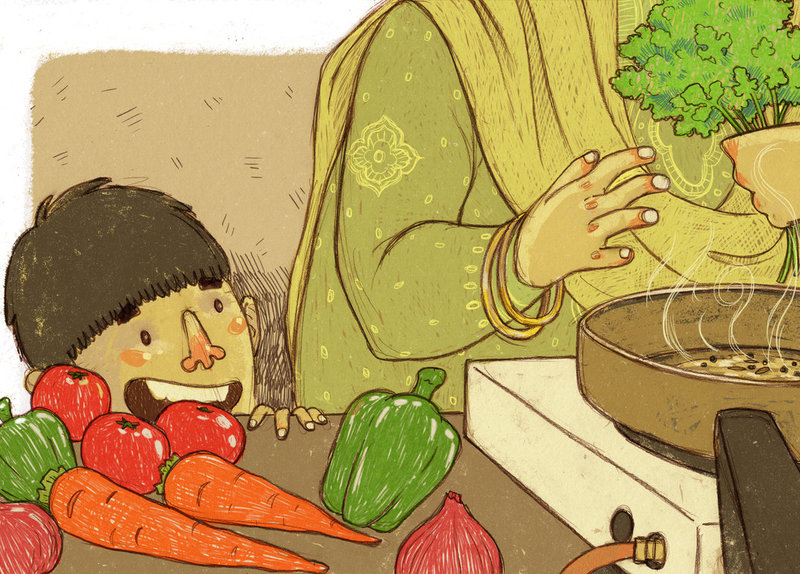
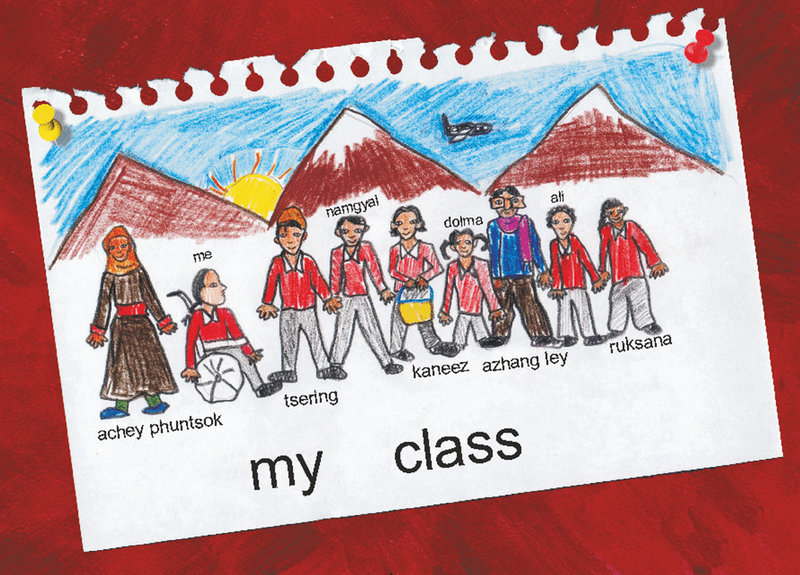
And while you're (hopefully) contemplating these rather baffling questions, allow us to make suggestions of a few books that we consider diverse. Please add your book recommendations in the comments section below.
Favourites from StoryWeaver & Pratham Books
Please note that all these books are available in multiple languages.
1. Bonda and Devi
In this story of unlikely friendship, Devi – one of the protagonists – is physically challenged. Set in the future, we had to make the wheelchair kind of futuristic as well. Spot it?
2. Where Did Your Dimples Go?
Langlen's father is Tamil and mother is Manipuri. It was just before this story was illustrated that one of the contributors suggested that Langlen's (formerly known as Leela) mother be from the North-East region of India, since it is hugely under-represented in children's books.
3. Dum Dum-a-Dum Biryani
Bored of seeing only women cooking in children's books? Finally, a boy who loves to cook! Meet Basha, who loves to hang around in the kitchen as his Ammi cooks all kinds of delicious dishes.
4. A Helping Hand
Told through a series of letters, this is a moving story of acceptance and blossoming friendship.
Set in Ladakh, this is the story of Chuskit, a differently-abled girl who longed to go to school but was unable to because she could not walk. But after a nine-year wait, she is finally able to go to school!
6. Freedom Run
In many tiny villages in Uttar Pradesh, small children work long hours at the looms to create carpets famous around the world for their intricate designs. This is a story about the forgotten children of India.
7. Didi Ka Rang Biranga Khazaana
Living close to a garbage dump, these children run around garbage all day, without attending school. But then one day, Didi walks into the dump, changing their lives forever. Meet Didi and her young friends in this wonderful story that celebrates the joy of reading.
8. Adikhani series (a set of 10 bilingual books)
Drawing inspiration from the challenges facing tribal education, three organisations (Pratham Books, Ignus-ERG with the support of Bernard van Leer Foundation) held writing workshops with authors speaking Saura, Munda, Kui and Juanga languages to create picture books for early readers. These charming stories are drawn from the rich oral tradition of various tribal languages and the illustrations use tribal art with a contemporary twist. The script used in these books is Odia.
Dichi, a brave Bhotiya girl, takes part in the Chipko movement to save her beloved trees.
10. Manikantan Has Enough
Manikantan isn't pleased about having moved from his beautiful village to Smart City where his every move is being watched. But he did it for Amma, who is his mother and father and all the family he had in the world.
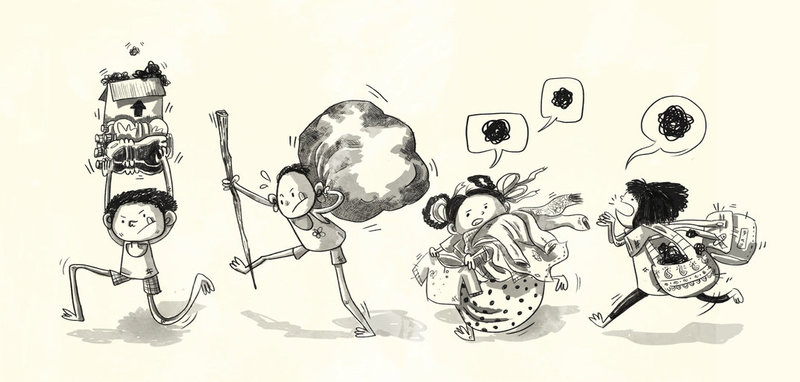
Favourites From Other Publishers
1. 'Bhimrao Ambedkar: The Boy Who Asked Why' by Sowmya Rajendran and Satwik Gade (Tulika)
2. 'The Princess with the Longest Hair' by Komilla Raote and Vandana Bist (Katha)
3. 'The Lonely King and Queen' by Deepa Balsavar (Tulika)
4. 'The Sackclothman' by Jayasree Kalathil (DC Books)
5. 'Dear Mrs. Naidu' by Mathangi Subramanian (Young Zubaan)
6. 'Simply Nanju' by Zainab Sulaiman (Duckbill Books)
ଇଣ୍ଡିକ ଫଣ୍ଟ ଓ ସଫ୍ଟୱେର ବିଷୟରେ
Posted by Remya Padmadas on June 28, 2016Kumarika Mohanty is an Electrical Engineer and an Infosys staffer. She loves writing about causes that are close to her heart. She is very passionate about her mother tongue Odia and believes in making good use of Social Media channels to do her bit in propagating the use of Odia by the people who speak the language.
Here, she writes about Indic language software and tools, and how they have helped her work as a translator. You can read this post in English, here.
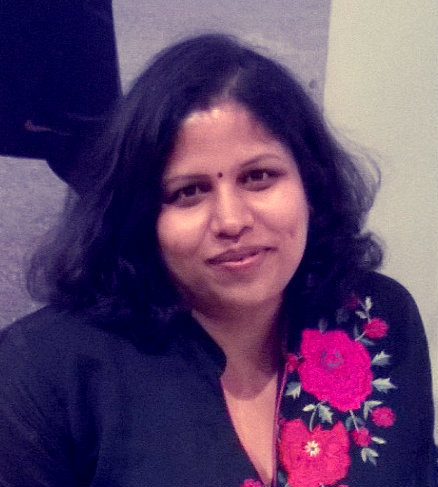
ମୁଁ ଓଡ଼ିଆ fonts ପ୍ରଥମ ଥର 1997 ରେ କମ୍ପ୍ୟୁଟର ସ୍କ୍ରିନ ରେ ଦେଖିବାକୁ ପାଇଥିଲି |ମୋ ବାପା ପୁନେ ରୁ ଶ୍ରୀଲିପି ଓଡ଼ିଆ ସଫ୍ଟୱେରକିଣି କି ଆଣି ଥିଲେ | ଯଦିଓ ସେ ଇଂରାଜୀ କିବୋର୍ଡ଼ ରେ ଓଡ଼ିଆ ଅକ୍ଷର ଖୁବ ଦକ୍ଷତା ସହ ଆଜି ଯାଏଁ ଟାଇପ କରନ୍ତି, ଯେଉଁପ୍ରକାଶକ ମାନଙ୍କ ପାଖରେ ଏହି ସଫ୍ଟୱେର ନଥାଏ, ତାଙ୍କୁ ଲେଖା ଗୁଡିକ ଦେବାରେ ବହୁତ ଅସୁବିଧା ହୋଇ ଥାଏ | ଲେଖା ଗୁଡ଼ିକଆଗ ପ୍ରିଣ୍ଟ କରି ପୁଣି ଥରେ ଟାଇପ କର ଯାଇ ଥାଏ |
କିଛି ବର୍ଷ ପୂର୍ବେ ୟୁନିକୋଡ ଫଣ୍ଟ ରେ ଓଡ଼ିଆ ଲେଖା ଟାଇପ କରିବାର ସୁବିଧା ଥିବାର ଜାଣି ଖୁବ ଭଲ ଲାଗିଲା | ୟୁନିକୋଡ ରେଭାରତୀୟ ଭାଷା ଲେଖା ଯିବାର ସୁବିଧା ଏକ ପ୍ରକାର ବରଦାନ ସ୍ୱରୂପ | ଏବେ ବିଶ୍ୱ ସାରା ଭାରତୀୟ ଲେଖା ଅତି ସହଜ ରେପଠା ଯାଇ ପାରିବ | ସୋସିଆଲ ନେଟୱର୍କିଙ୍ଗ ର ଚାହିଦା ଏବେ ବଢ଼ିଛି ଏବଂ ଭାରତୀୟ ଭାଷା କୁ ଏହା ମାଧ୍ୟମ ରେ ବହୁତପ୍ରୋତ୍ସାହନ ମିଳୁଛି | ମୁଁ ମୋ Windows ଫୋନ ରେ "Type Odia" ନାମକ ଏକ ଆପ ଇଂସ୍ଟଲ କରିଛି | ଏହାକୁ ବ୍ୟବହାର କରି ମୁଁଟ୍ୱିଟର ଓ ଫେସବୁକ ଦ୍ୱାରା ଅଗଣିତ ଓଡ଼ିଆ ମାନଙ୍କ ସହ ମୁଁ ଯୋଗାଯୋଗ କରି ପାରୁଛି | @nidhi_budha, @wearebbsr, @BBSRBuzz, @akala_kushmanda ପରି କିଛି ଟ୍ୱିଟର handle ଓଡ଼ିଆ ଓ ଓଡ଼ିଶା ବିଷୟରେ ଭଲ ତଥ୍ୟ ଟୁଇଟ କରନ୍ତି| କେତେକ ବ୍ଲଗ ମଧ୍ୟ ଅଛି ଯାହା ମୁଁ ସମୟ ସମୟରେ ପଢ଼ି ଓଡ଼ିଆ ଓ ଓଡ଼ିଶା ବିଷୟରେ ବହୁତ କଥା ଜାଣିବାକୁ ପାଇଥାଏ, ଯେପରି-https://akalakushmaanda.


ଗତବର୍ଷ ମୁଁ Pratham Books ସହ କାମ କରିବାର ସୁଯୋଗ ପାଇଲି ଓ ଦୁଇଟି ଅନଲାଇନ ଏଡିଟର ସାହାଯ୍ୟ ରେ ପୁସ୍ତକଅନୁବାଦ ଓ Proof Reading କରୁଥିଲି - Branah (https://www.branah.com/oriya) ଓ Tamilcube (http://tamilcube.com/oriya/). ଦୁଇଟି ଏଡିଟର ଏଥିପାଇଁ କାରଣ ମତେ ଯୁକ୍ତାକ୍ଷର ଗୁଡିକ ରେ ଅସୁବିଧା ହେଉ ଥିଲା| Pratham Books ର ମେନକା ରମଣ ଙ୍କୁ ମୁଁ ଧନ୍ୟବାଦ ଜଣାଉଛି କାରଣ ସେ ମତେ Google Input Tools ବିଷୟ ରେଅବଗତ କରାଇଲେ | ଏହା ଉପଯୋଗ କରି ଖୁବ ସରଳ ରୂପେ ସୁବିଧା ରେ ଓଡ଼ିଆ ୟୁନିକୋଡ ରେ ମୁଁ ଟାଇପ କରି ପାରୁଛି | ଏହାର ଉପଯୋଗ ରେ ବନାନ ରେ ତ୍ରୁଟି କରିବାର ସମ୍ଭାବନା ଖୁବ କମ ରହୁଛି |
କିଛି ଦିନ ପୂର୍ବେ ମୁଁ ଏକ ଉଇକିପିଡିଆ ର ନିର୍ଦେଶ ପୁସ୍ତିକା କୁ ଇଂରାଜୀ ରୁ ଓଡ଼ିଆ କୁ ଅନୁବାଦ କରୁ ଥିଲି | ସେଥିରେ ମୁଁ ଜାଣିବାକୁପାଇଲି ଯେ MediaWiki ନାମରେ ଏକ ଅନଲାଇନ ଅନୁବାଦ କରିବା ଉପକରଣ ଅଛି | ମୁଁ ଏ ଯାଏଁ ତାହା ବ୍ୟବହାର କରିନାହିଁମାତ୍ର ଏତିକି ଜାଣିବାକୁ ପାଇଲି ଯେ ସେଥିରେ ଛୋଟ ଛୋଟ ବାକ୍ୟ ଅନୁବାଦ କରାଯାଇ ପରେ |ଅନୁବାଦକ ମାନଙ୍କ ପାଇଁ ଏହିଅନଲାଇନ ଉପକରଣ ବହୁତ ଉପଯୋଗୀ ହେବ |
ଓଡ଼ିଆ ୟୁନିକୋଡ ପାଇଁ ଆଜିକାଲି ବହୁତ ଗୁଡିଏ ସଫ୍ଟୱେର, ଅନଲାଇନ ଉପକରଣ ଓ ଆପ୍ପ ଆସିଲାଣି | ଏହି ଲିଙ୍କ ରେସେଗୁଡିକ ରୁ କିଛି କିଛି ଲେଖା ହୋଇଛି - http://odia.odisha.gov.in/it-
You can read some of Kumarika's translations to Odia on StoryWeaver here and you can follow her on Twitter @kumariika
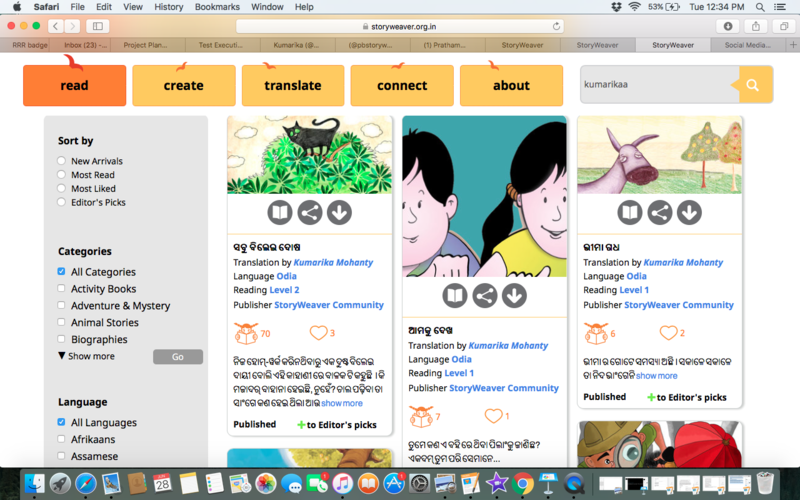
Do you have a favourite software on online tool for translation? Tweet us @pbstoryweaver or write to us [email protected] and tell us what it is!
Be the first to comment.Navigating Indic fonts and software: A translator's advice
Posted by Remya Padmadas on June 28, 2016Kumarika Mohanty is an Electrical Engineer and an Infosys staffer. She loves writing about causes that are close to her heart. She is very passionate about her mother tongue Odia and believes in making good use of Social Media channels to do her bit in propagating the use of Odia by the people who speak the language.
Here, she writes about Indic language software and tools, and how they have helped her work as a translator. You can read this post in Odia, here.

The first time I saw Odia fonts typed on a computer screen was in the late 90's. My dad had ordered Shree Lipi Oriya software. Though he got accustomed to the English key equivalents for Odia letters, a key issue that he faced with this software was its portability. The entire typed text (at times the entire volume of a book) was printed and then sent to type setters who used to retype the entire content, if the same software was not available with them. Though, tedious in this aspect, he still uses this software and has gotten it upgraded over the years.
Kumarika's Reccomendations
Few years back, I came across Indic fonts in Unicode. A boon, I must add, for people who want to write in Indian languages. I instantly installed 'Type Oriya' app on my Windows Phone. I am sure, it is available for iOS & Android too. This app lets me tweet in Unicode Odia and I have been able to connect to numerous Odias across the globe, like @nidhi_budha, @wearebbsr, @BBSRBuzz, @akala_kushmanda to name a few. I have also come across these blogs in Odia/ about Odia that I thoroughly enjoy - https://akalakushmaanda.


When I got associated with Pratham Books last year, I came across couple of more online editors for Odia. I am comfortable with two online editors- Branah and Tamilcube. I have to use two editors as one overcomes the shortcomings of the other. One striking issue is, due to a major use of 'juktakhyaras' (letters made from various combinations of vowels and consonants). While Branah allows 'juktakhyaras' that are not valid/used in Odia, Tamilcube does not let me create a couple of valid 'juktakhyaras'!
While I was interacting with Team StoryWeaver, regarding this blog, they mentioned Google Input Tools. I gave it a try and I find it to be very helpful. The interface is quite user friendly, in case of Google and it also eliminates the possibility of making spelling mistakes. I would like to thank StoryWeaver for introducing this to me.
Last month, I was involved in translation of a particular Wikipedia document. Here, I got to know of an online translation tool - MediaWiki. Though I am yet to use it, I am aware that it can translate smaller chunks of texts from a source language to target language. Such a tool would be very useful to translators, I am sure.
This webpage has a good collection of online editors and softwares available -http://odia.odisha.gov.in/it-
You can read some of Kumarika's translations to Odia on StoryWeaver here and you can follow her on Twitter @kumariika

Do you have a favourite software on online tool for translation? Tweet us @pbstoryweaver or write to us [email protected] and tell us what it is!
Be the first to comment.